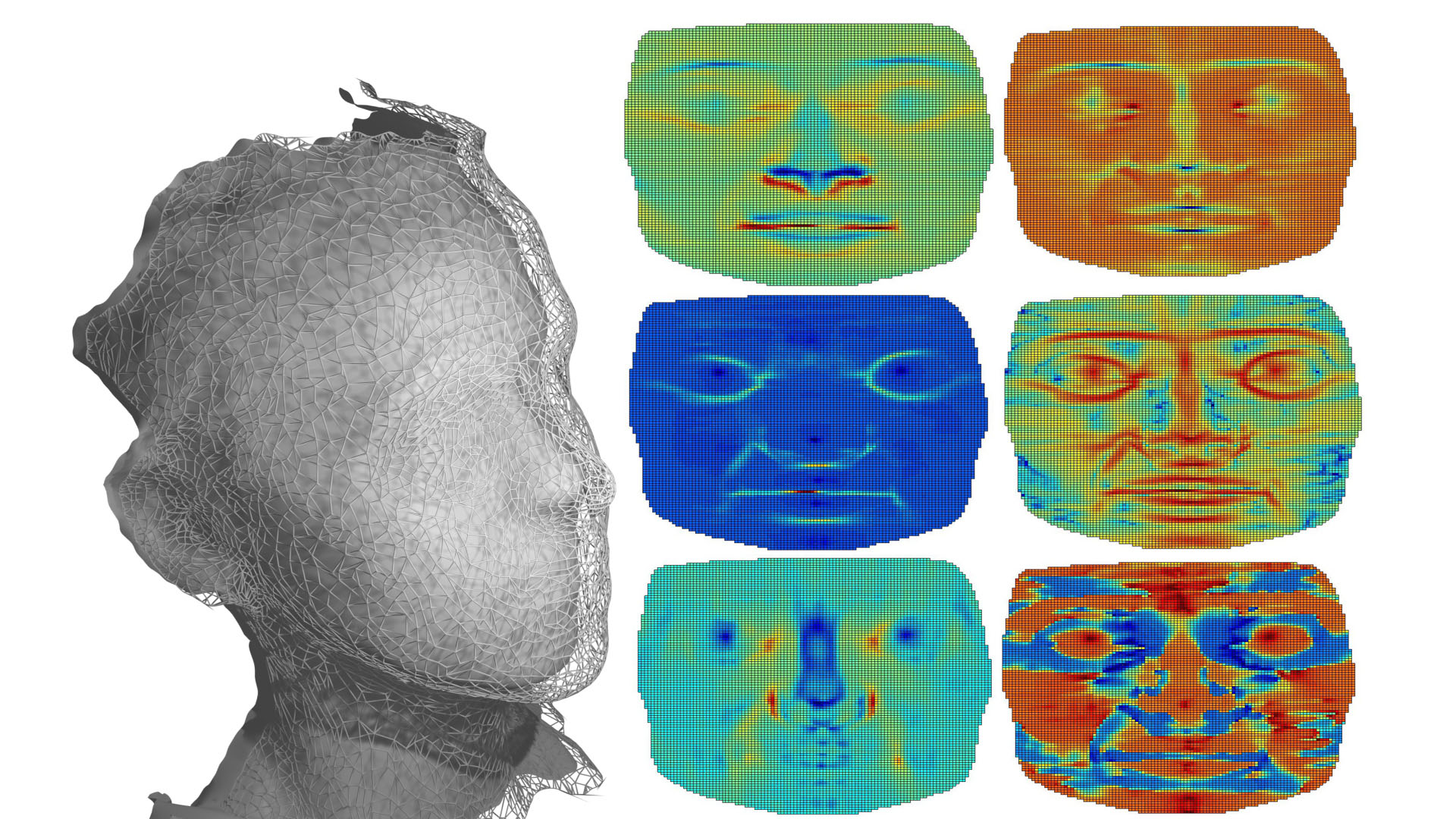The study of facial morphology is currently a leading topic for applications regarding security, safety, product design, marketing, and maxillo-facial surgery.
The human face conveys significant information both from geometrical and emotional points of view. The geometry of facial traits is unique, as faces are all similar in terms of shape but all different. Also, every person’s face has several isometries which are the expressions and states. This fosters the research in the field to investigates about the features of the facial surface, which information can be extrapolated from it and used for comparison between one face and another, how is perceived and processed by people. Indeed, face perception is something that could really inspire the algorithms and gives hints for facial feature extraction.
This study has evident applications in marketing, security, and safety. Nonetheless, some recent contributions have fostered the application of face analysis techniques to the product design context; the inner feedback of the user could be evaluated via micro-expression recognition routines to improve the characteristics of a product and make it more satisfying for the user, in terms of its conceptualization and design. At last, maxillo-facial surgery claims some knowledge from this discipline for the purposes of surgery evaluations and pre-operative planning.
We believe that this research vein is going to increase and become more popular, especially with the recent advances in big data, virtual reality, deep learning, and AI.
Face recognition
Facial categorization is a nurtured branch of Computer Vision & Patter Recognition field, fostered by the number of applications which it could contribute to: subject identification for the recognition of suspects, face verification for authentication purposes (data protection and access to strategic places), and facial expression classification for emotion detection.
In this context, 3D data have recently proven to be more robust to different lightning conditions, camouflage and make-up changes. Even if standard bidimensional images are easier to be obtained from (CCTV) video frames, the advances in acquisition systems and the accessibility (in terms of cost) of sensors/depth cameras have shown that it is possibile to gain three-dimensional data quite easily nowadays.
The classification methods provided by recent advanced versions of convolutional neural networks (CNN) allow to manage substantial amounts of data from facial database and to cluster them according to the emotion (facial expression recognition) or the subject (face recognition), with the aim of classifying the “query” face and understand who it belongs to or which emotion it is displaying.
Another application concerns Product Design. The latest approaches of

Maxillo-facial surgery planning and evaluation
Maxillo-facial surgeries significantly change the facial surface and the appearance of the visage. Considering the importance of the face in the social life and communication, it became more and more crucial to plan in advance the soft-tissue changes that the face will undergo with every specific surgery.
Thanks to a collaboration with the maxillo-facial surgery team of Turin hospital “Le molinette”, headed by Prof. Guglielmo Ramieri, we are developing a predictive and planning protocol to estimate in advance how the facial soft-tissues will change with interventions. Starting from the CT data of previously operated patients, a system is being developed to model the facial movements depending of the operation type.
Also, we are studying zygomatic interventions to evaluate which geometrical features (area, volume, angles…) are the most descriptive of the augmentation of the

Perception
When neural networks and Gabor features have been conceptualized for computation purposes, the main idea was somehow to copy a process typical of the brain and transpose it into a type of process that a compiling program could run and perform. The investigation of brain functioning is, indeed, a hot topic investigated by scientists coming from several backgrounds including psychology, neuroscience, biology, and computer science. In particular, the foundations of perception became more and more appealing for researchers in Computer Vision, who wish to uncover the way the visual system at brain level works to transfer the transferable knowledge to automatic routines of image/depth map processing.
In particular, face perception studies are gaining increasing attention from the scientific community, due to the special “path” that face processing has in the right hemisphere of the brain. Experiments have proven, indeed, that face analysis is a special process for the brain, which involves a specific cerebral area and dedicated neurons. Also, the subjectivity of face recognition (for instance the (in)capacity of recognizing identical twins) and of the mental representation of faces will give resounding hints for the next steps of research in 3D Face Analysis.

Projects
University project “SYN DIAG ― Development of a system for 3D face comparison aimed at medically diagnosing rare diseases and syndromes involving face dysmorphisms” of the Alta Scuola Politecnica (ASP) — IX ASP cycle.
Proof of Concept (PoC) project “SYN DIAG — Quantitative ultrasound scans” (2018, funding of the Politecnico di Torino and Compagnia di San Paolo).
Patents
Patent for invention No. 102015000075603 for “Procedimento di elaborazione di immagini mediche di un viso per il riconoscimento di dismorfismi facciali”. Patent application filed at “Ufficio Brevetti e Marchi” on November 23, 2015.
Patent for invention No. P3068IT00 for “A computer based method for classifying a mass of an organ as a cyst ”. Patent application filed in 2019.
